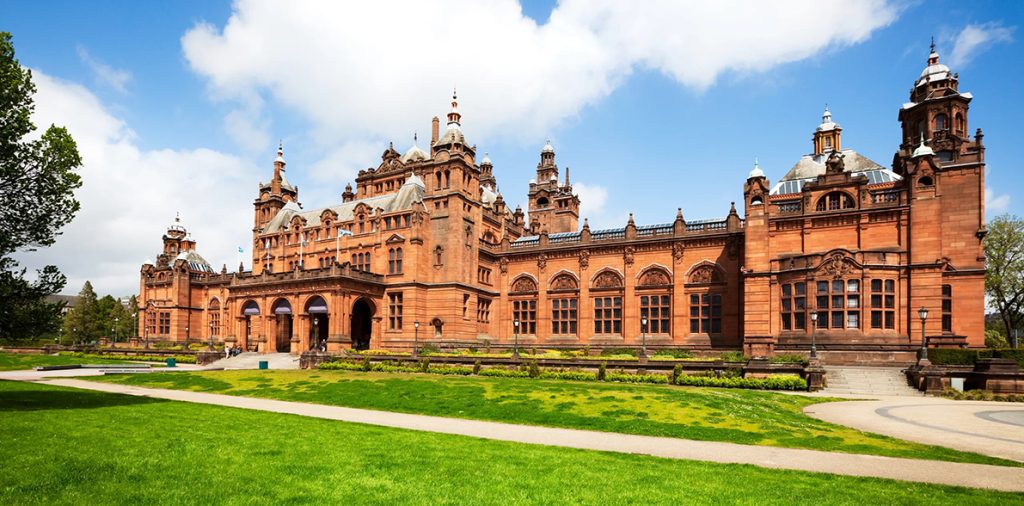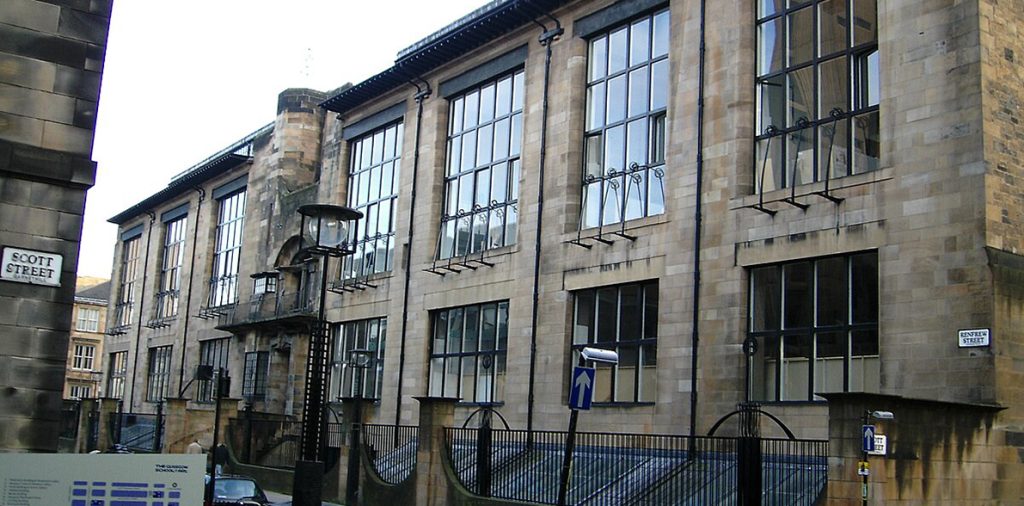I’ve visited countless cities across the globe, but few places have captivated me quite like Glasgow. This vibrant Scottish city is a treasure trove of historical landmarks, from its medieval castles to awe-inspiring cathedrals and grand mansions. Each corner of the city holds a piece of history, offering something for every history lover, whether you’re a fan of medieval architecture, industrial heritage, or religious history.
I’ll walk you through the must-visit historical sites in Glasgow, share my personal experiences, and provide you with all the information you need to explore the city’s rich history. Whether you’re planning a quick weekend getaway or a longer stay, Glasgow is sure to leave you with lasting memories of its fascinating past.
Morning: Medieval Marvels and Religious Wonders
1. Glasgow Cathedral – A Stunning Example of Gothic Architecture
📍 Location: Cathedral Square, Glasgow G4 0QZ
🕒 Opening Hours: 9:30 AM – 5:00 PM (Daily)
💰 Admission: Free (Donations welcomed)
My day began with a visit to the Glasgow Cathedral, one of the most important and historically significant buildings in Scotland. Located near the city center, this stunning Gothic cathedral was built in the 12th century and is dedicated to St. Mungo, the patron saint of Glasgow. The cathedral’s intricate architecture, with its soaring spires and stained glass windows, is truly breathtaking.
As I walked through the cathedral, I was struck by the sense of tranquility and reverence. The medieval crypt is a particular highlight, as it’s one of the oldest parts of the building, dating back to the 12th century. The architecture is a true testament to the skill of the medieval builders, with its delicate arches, stone carvings, and vaulted ceilings.
Why I Recommend It:
- Pros: Rich historical significance, free entry, beautiful gothic architecture.
- Cons: The cathedral can get quite busy, particularly on weekends, so it’s best to visit early in the day to avoid the crowds.
How to Get There:
The cathedral is located in the Glasgow city center and is easily accessible on foot. From Buchanan Street, it’s about a 15-minute walk, passing through the heart of the city. Alternatively, you can take the Subway to St. Enoch Station and walk about 10 minutes to the cathedral.
2. The Necropolis – Glasgow’s Victorian Cemetery with a View
📍 Location: 50 Cathedral Square, Glasgow G4 0UZ
🕒 Opening Hours: Open daily (24 hours)
💰 Admission: Free
Just a short walk from the Glasgow Cathedral is the Necropolis, a vast Victorian cemetery that overlooks the city. This hillside cemetery is home to over 50,000 graves, including the final resting places of many of Glasgow’s wealthiest and most influential citizens from the 19th century. The cemetery is often referred to as the ‘City of the Dead’ due to its sheer scale and its role as a burial ground for the city’s elite.
I was fascinated by the cemetery’s grand mausoleums, ornate statues, and impressive memorials. The tomb of John Knox, the famous Scottish reformer, is a notable landmark here. The cemetery also offers stunning views of Glasgow and its surrounding areas, making it a perfect spot for a peaceful walk and some reflection.
Why I Recommend It:
- Pros: Unique historical site, stunning views of the city, peaceful and atmospheric setting.
- Cons: It can be a bit eerie, especially in the winter months, and some of the paths can be steep and uneven, so be cautious if you’re not comfortable walking on hilly terrain.
How to Get There:
The Necropolis is located just behind Glasgow Cathedral, making it easy to combine both sites in one visit. From the cathedral, you can simply follow the Cathedral Square and walk up the hill to the cemetery entrance. It’s a short 5-minute walk, but be prepared for a slightly steep climb.
Afternoon: Castles, Mansions, and Industrial Heritage
3. The Kelvingrove Art Gallery and Museum – A Symbol of Glasgow’s Victorian Grandeur

📍 Location: Argyle St, Glasgow G3 8AG
🕒 Opening Hours: 10:00 AM – 5:00 PM (Daily)
💰 Admission: Free (Donations welcomed)
In the afternoon, I made my way to Kelvingrove Art Gallery and Museum, one of Glasgow’s most impressive landmarks. The building itself is a Victorian masterpiece, designed in the Spanish Baroque style and opened in 1901. As soon as I walked through the grand entrance, I was captivated by the architecture, with its intricate stone carvings, soaring ceilings, and elegant galleries.
While the museum is famous for its collection of art, including works by Rembrandt, Van Gogh, and Dali, I was particularly drawn to the Victorian era exhibits that explore Glasgow’s rise as an industrial powerhouse. The museum’s displays about the Clyde shipbuilding industry and the city’s transformation during the Industrial Revolution were fascinating. Glasgow’s industrial history is an integral part of its identity, and this museum offers a deep dive into the period.
Why I Recommend It:
- Pros: Free entry, vast and varied collection, stunning architecture, family-friendly.
- Cons: Can be crowded during peak tourist season, and the museum is quite large, so it’s easy to feel overwhelmed if you try to see everything in one visit.
How to Get There:
From the city center, the Kelvingrove Art Gallery and Museum is easily accessible by bus or Subway. I took the Subway from Buchanan Street Station to Kelvinhall Station, which is just a 5-minute walk to the museum. Alternatively, it’s a pleasant 15-minute walk from the city center.
4. Glasgow’s Transport Museum – Industrial Legacy and Innovation
📍 Location: 1-10, 111 Paisley Rd W, Glasgow G51 1DZ
🕒 Opening Hours: 10:00 AM – 5:00 PM (Daily)
💰 Admission: Free
For a more in-depth look at Glasgow’s industrial past, I highly recommend visiting the Glasgow Transport Museum, which is dedicated to the history of transportation and how it helped shape the city. The museum is housed in a modern building with an impressive collection of historic vehicles, including trains, trams, and even Glasgow’s first subway train.
One of the highlights of my visit was learning about the Clyde shipyards, where the famous Queen Mary and Queen Elizabeth ships were built. There is also an amazing section on the history of the Glasgow subway, which was the third oldest underground railway system in the world, after London and Budapest.
Why I Recommend It:
- Pros: Free entry, fascinating exhibits on industrial and transport history, great for families.
- Cons: Some exhibits are geared more towards children, so if you’re not particularly interested in transportation, it might not be the best fit for you.
How to Get There:
The Glasgow Transport Museum is located in the Southside of the city, and it’s easily accessible from the city center. I took the Subway from Buchanan Street Station to Kinning Park Station, which is just a 10-minute walk from the museum.
Evening: Uncovering Glasgow’s Architectural Gems
5. The Glasgow School of Art – Mackintosh’s Masterpiece
📍 Location: 167 Renfrew St, Glasgow G3 6RQ
🕒 Opening Hours: 10:00 AM – 5:00 PM (Closed on Sundays)
💰 Admission: £10 for the guided tour
If you’re a fan of architecture, a visit to the Glasgow School of Art is a must. Designed by the famous architect Charles Rennie Mackintosh, this building is considered one of the finest examples of Art Nouveau architecture in the world. The exterior of the building is adorned with beautiful details, and the interior is equally stunning, with its distinctive combination of clean lines, intricate woodwork, and geometric patterns.
During my visit, I took a guided tour of the building, which was an excellent way to learn about the history and significance of Mackintosh’s design. The tour also provided insights into the restoration efforts following the fire that partially damaged the building in 2014.
Why I Recommend It:
- Pros: Stunning architecture, informative guided tours, central location.
- Cons: The tours are not always available without prior booking, so it’s best to check in advance.
How to Get There:
The Glasgow School of Art is located in the city center. From Buchanan Street, it’s a 10-minute walk, or you can take the Subway from Buchanan Street Station to St. Enoch Station, which is just a short stroll from the art school.

Embracing Glasgow’s Rich History
Glasgow has an undeniable charm when it comes to its historical landmarks and cultural richness. From the gothic grandeur of Glasgow Cathedral to the fascinating tales embedded within the Necropolis, every historical site in this city feels like stepping into a chapter of Scotland’s past. I found that each location offers a unique glimpse into a different era, whether it be the medieval roots of the Glasgow Cathedral, the Victorian splendor of the Kelvingrove Art Gallery, or the industrial legacy captured at the Glasgow Transport Museum.
What makes Glasgow truly special is its ability to seamlessly blend the old with the new. The city has kept its historical architecture alive while embracing modernity, allowing travelers to experience both the grandeur of the past and the vibrancy of the present. The city’s commitment to preserving and showcasing its history makes it an exciting destination for anyone with an interest in the past.
I found that spending the day exploring Glasgow’s historical sites wasn’t just an educational experience—it was an emotional one. There’s something incredibly moving about standing in the same spots where significant historical events took place, where people lived, worked, and shaped the future of the city. Whether I was admiring the intricate details of Mackintosh’s School of Art or wandering the peaceful pathways of the Necropolis, each moment felt like a connection to the lives of those who once walked these streets.
For anyone planning a trip to Glasgow, I wholeheartedly recommend dedicating time to explore its history. It’s a city that encourages curiosity, invites reflection, and allows you to walk through the centuries. Whether you’re a fan of art, architecture, religion, or industrial heritage, Glasgow has something that will undoubtedly resonate with you.
In the end, Glasgow isn’t just a city; it’s a living, breathing museum of history that you can experience firsthand. So, pack your walking shoes, bring your curiosity, and let Glasgow’s history unfold in front of you. You won’t be disappointed.
I’ll definitely be returning for another deep dive into its past and present. There’s always more to discover in this vibrant Scottish city, and the rich tapestry of stories it offers is something no history enthusiast should miss. Happy travels, and I hope you enjoy your own journey through the fascinating history of Glasgow as much as I did!
